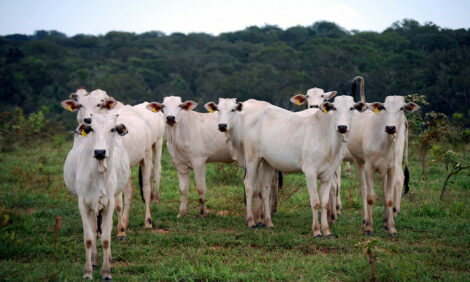



Update on Bluetongue Disease in Germany
USDA - Germany reported a new case of Blue Tongue Disease (BT) in a sentinel cow. The outbreak occurred in the state of North Rhine-Westphalia in the West of Germany. This region was already affected in the Fall/Winter of 2006 and protective measures and surveillance systems were already in place. No additional trade implications concerning intra-EU trade are expected. Reports USDA FAS.On June 6, German veterinary officials reported a new case of the Blue Tongue Disease serotype 8 (BT-8) that was detected in a sentinel cow in the county of Gummersbach, North Rhine Westphalia (NRW). In addition, a sheep was confirmed also in NRW several weeks later. Based on previous infections in Fall 2006, 20 km protection and 150 km surveillance zones, from which transport of ruminants is forbidden, except as outlined in EU decision 2005/393, were already in place. Thus no new protective measure were put in place.
Sentinel animals are used to detect new infections. Germany is divided into squares whose sides are 45 km (28 miles). In each square, 150 animals that originally tested negative for BT-8 are monitored on a monthly basis. This is necessary because the two tests1 that are used to detect BT-8 can only determine if an animal is infected, but cannot tell whether the infection occurred recently or a long time ago.
BT is a non-contagious viral disease. As a result, control measures for BT differ from more highly contagious diseases such as Avian Influenza (AI) and do not involve the destruction of large number of animals.
BT is transmitted through mosquitoes (culicoides ssp.) and affects ruminants and sheep. However, only sheep fall seriously ill. BT does not affect humans. BT was first recorded in Germany in August 2006. The last case was reported in January 2007. Majority of the BT cases occurred in the state of North Rhine-Westphalia. For details on geographical distribution and affected animal types please refer to tables 1 and 2.
Table 1: Number of confirmed BT Cases by State and Month
1 Two methods are applied to detect the BT virus
- a serological blood test detects the presence of antibodies against the disease
- an agent identification test (usually PCR) detects parts of the virus genome in a blood sample.
Table 2: Number of confirmed BT by Type of Animal Holding and Month
Source: German Ministry of Food, Agriculture, and Consumer Protection (BMELV), Friedrich-Loeffler-Institute (FLI)
Related reports:
TheCattleSite News Desk


